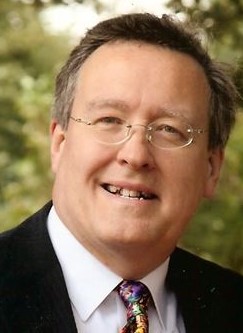Over several decades, in the course of writing many reports and papers (often for audiences of government officials and senior corporate executives), along with writing a great many articles for a range of publications and online outlets as well as editing newspapers, newsletters and magazines, I’ve found it best to
(1) write the piece, then
(2) edit it to make sure it’s readable, understandable and says what you want to say and then
(3) edit it again to ensure that no reader can – intentionally or unintentionally – misinterpret either the text or the sentiment in which it’s been written.
It’s this third stage that many writers (and editors) ignore –
and they do so at their peril!
I was introduced to the delights of writing and editing by my then colleague, Alfred Hossack. ‘Hoss’, as he was affectionately known, had graduated from being a teenaged firewatcher, on the roof of St Pancras’ church, in London, in 1940, during the Blitz, to a career in the Royal Air Force doing the dangerous job of a Pathfinder. Later, he turned his hand to being a writer and published author. By the time his path crossed mine it was the late 1970s and we became colleagues at a quasi-autonomous non-governmental organisation (known as a quango) based in north west London.
Hoss showed me – as I was embarking on working life – that, if I wanted my writing to be more easily understood, I should use shorter English words derived from the Anglo-Saxon language rather than the longer equivalents from Romance languages, such as Latin and French. He taught me the value of writing in the active voice (‘he said’ rather than ‘it was said by him’). He extolled the virtue of writing short sentences – since these are easier for readers to understand.
He explained that readership of anything written usually drops off substantially after the first 50 words. So, he advocated, make sure the first 50 words get to the point and encourage readers to read on. Hoss also advised against using clichés, trade jargon or anything that can be easily misunderstood by someone who doesn’t understand the ‘world’ you inhabit.
Having written an article, report or paper, it’s vital to read it. Check the spelling and syntax. Ask yourself, “If I was reading this for the first time, would I understand it easily?” You must also decide whether its meaning is what you intended.
Bear in mind there’s always something that can be added to, or subtracted from, an article – to add a thought here and a nuance there. Indeed, any article has an almost infinite number of possible iterations – especially if several people have to ‘approve’ it before its intended audience can see it. Your job, as an editor, is to get the piece of writing to an ‘optimum’ state – where it’s as readable as it can be within the time set for its production.
The final and most important step is one which is usually ignored – through ignorance or not allowing sufficient time to do it. This step is to edit the piece again – this time to ensure that no reader can, intentionally or unintentionally, misinterpret either the text or the sentiment in which it’s been written. Not taking the time to do this will be to the piece’s – and the writer’s – detriment. At best, such writing will provoke laughter where it was intended to bring serious thought but worse outcomes, for the writer as well as the written piece, are not unknown.
When you undertake this final editing task, you must consider the intended readers’ cultural background; their prejudices and assumptions; their likely educational and intellectual standards and expectations; their sense (or absence) of humour, and so on – and compare these with yours. The skills involved in editing at this third stage are substantially different from, and more complex than, the (conventional) editing skills that are needed for step two of the process.
Little did Hoss know, all those years ago, that the writing and editing tips and techniques he’d instilled into me would enable me to earn a living as a writer, journalist, publicist, author and editor, working with clients and audiences around the world. It’s been a path of which I hope that that former Pathfinder would have wholeheartedly approved.
By Bob Little
Bob Little is a UK-based writer, commentator and publicist, specialising in the corporate learning industry. Yet he is so much more – with interests, and skills, in such fields as music, history and sport. Having graduated – in economics – from University College Cardiff, part of the University of Wales, Bob became a journalist and editor specialising in the corporate training/ learning sector. He was introduced to what became the corporate online learning technologies industry in May 1990. Bob works globally and his work is published around the world. He advises and helps promote the interests of a number of organisations around the world – ranging from small, niche organisations to large enterprises.
For further details, contact Bob via bob.little@boblittlepr.com

